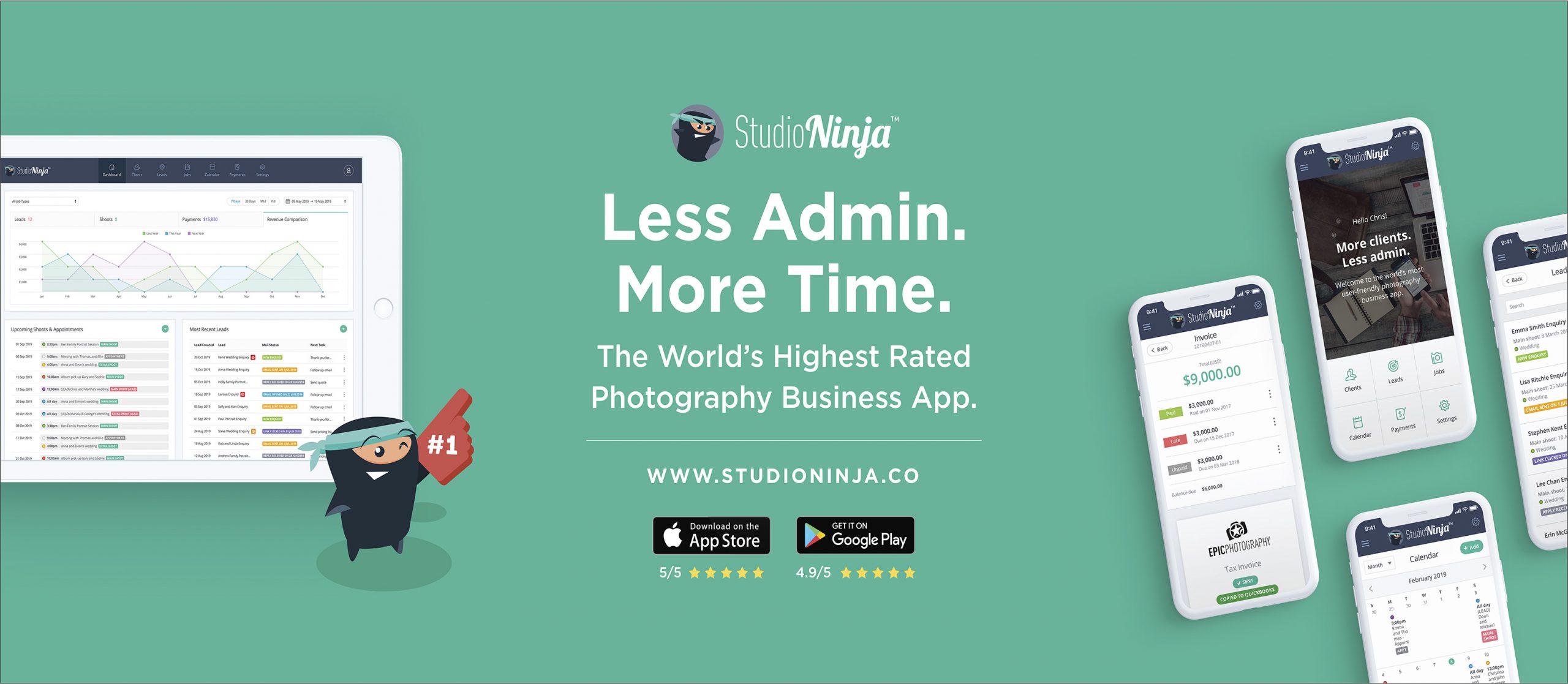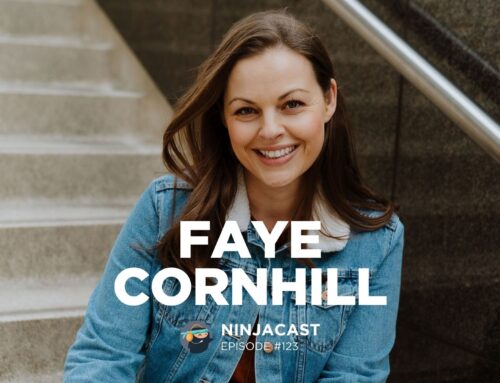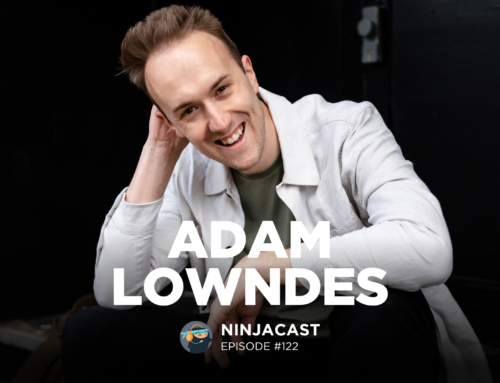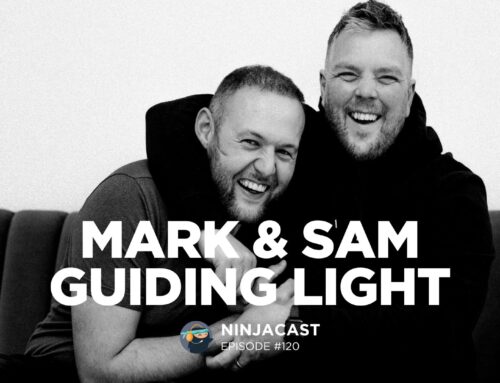030: Rensche Mari – The Power of Print & Developing Your Storytelling Style Through Capturing Connection
June 10, 2021
“Print your work. Seeing your work in front of you truly is incredible & allows you to evaluate what works and what doesn’t. “
RENSCHE MARI
Hey everyone! It’s Sally here, from Studio Ninja. Today’s episode is all about Rensche Mari.
Rensche Mari is a South African based photographer who has been a Wedding and Portrait photographer for the last 16 years with a background in visual communication. Rensche focuses on being a storyteller, so that each wedding ends up being printed and bound into a beautiful keepsake.
One of the things Rensche loves to talk about is print, I feel like so many photographers don’t understand the power of print, and how they can easily step up their game by creating something for clients to touch. Rensche has been printing albums and creating gallery walls for more than 14 years and believes it is a great way to market yourself as a photographer and to actually appreciate your own work.
Check out some of the biggest points from Rensche’s interview below:
What are your top tips for listeners looking to improve their storytelling skills?
Yeah, so each client I have, they will get an album. So there’s no no album option. Every client will get an album, even if it’s a small album, you will get an album. And the way I see it is my photos are more powerful as a story than it is individually. So I can’t give my photos into Fearless Photographers, it just won’t make the cut. But my albums are my pride and joy, and what I put in there is the actual story of the day.
So for me, telling the story is showing up on the day and shooting for your album. It’s actually seeing, what am I going to put in the album? What’s going to make the story even better? What doesn’t need to be there? But I will see it on the day. I’ll be like, “Okay, I’m going to take this shot for the bride, but this won’t make the cut for the album because it’s unnecessary. It’s pretty and they can see it online or on their USB disk,” which is not the in here anymore, but they will see the story that I put out for them in the album.


How do you capture connection & build relationships with your clients?
So before I do anything, I send my clients an email and I ask them how comfortable they are in front of the camera. When they inquire, they get a little list of questions. And the one question is, “On a scale from one to 10, how comfortable are you in front of the camera?” And the reason I ask this is if they’re already uncomfortable, I’d rather suggest we do a little couple’s session or something like that, just so they can see that it’s not going to be weird. Because I think what happens with me is before I had to get a photo session done for myself, I’m stressing the whole time because I’ve never done it. I’ve never been in front of the camera, I’ve only been behind it. So doing it, it eases you. And you’re like, “Okay, it’s not that bad, so don’t stress about it that much.”
I think for clients, who are going to do this once in a while, they’re going to do this. Maybe every 10 years, they’ll do a photo shoot. So I ask them, “How comfortable are you in front of the camera?” If you’re totally uncomfortable, we do a session. If you’re not, fine. But then when I show up, I tell them, “The first 15 minutes is going to be awkward. We’re going to get to know each other a little bit, and then it’s going to be fun.” And once they see, “Okay, listen, this is not that bad,” we can start getting that connection between people.
So when I’m doing big families, it’s very stiff. People are standing… And I’ve found that an icebreaker is telling people to look at each other because they have a connection with the other person, not with me. So I can’t tell them, “Oh, look at me and be free,” but I can tell them, “Look at each other, and then look back at me,” because they’ll have a smile on their face. Because it’s weird when you have to pose for a photo and you have to look at each other. So for big groups I always say, “Look at each other, laugh.” I have this little saying, “Remember you’re happy.” Because they get to that point where they’re like resting bitch face. And when I say, “Remember you’re happy,” they laugh. I used to say, “Pretend that you’re happy.” And the shock would first be like, “What do you mean pretend?” But then when I say, “Remember, you’re happy,” then they may smile, because like, “Oh, yes, you have to smile for this photo.”
It’s really about communicating with your clients and not making it too awkward. Because if they’re going to look at you the whole time, they’re going to be awkward. But if they’re constantly moving from the person next to them to you, they actually get so much more comfortable and they’re like, “Okay, this is actually fun. I get to look at someone that I love.”
And then another thing is connection for me is through touching someone, like holding their hand or giving them a hug. And I feel like when I look at some other photographers’ works, I find that they got the most amazing shot, but there’s no connection between people. And that’s just remembering to tell people, “Hold each other’s hands.” I love my family so much and I love my grandparents. And for me, that is one of the most special moments. So I’ll always grab my groom and his grandmother and my bride and her grandmothers or mother, and I’ll tell them, “Look at each other, hug each other.” And I’ll get all those shots. And I’ll even get one where they’re looking at me, but the connection between the ones where they’re looking at each other, just, I mean, it makes me excited. That’s what I love to do is just have people connecting with each other and not look at me. I’m not there. I’m there, but I’m not there.


What are your best kept marketing secrets?
So I’ve got two main marketing methods and the one is what I already told you. My clients, each client gets a book. That is a piece of real estate sitting on their coffee table, that everyone gets to see. Everyone that walks in will see the album and they can connect to it or they won’t. So they will contact me, “Oh, you did my cousin, you did my uncle. You did…” I get families that I’ve been photographing for 14, 15 years. And every time it’s the new cousin or the friend, the best friend, and that’s how it started.
I mean, it’s so silly to think that your client’s paying for a product that’s going to be advertising for you. And that’s why it’s so important to print for your clients and to give them stuff that you know the presentation is going to be amazing. I do walls for my clients and I make sure that they always have something visual in their house so that someone walks in, “Oh, wow, these are beautiful. Who’s your photographer?” Those are going to be your best clients because it comes through word of mouth, which is honest. I mean, putting an ad out on Instagram is not going to help me. It’s going to maybe give me more followers and give me someone that likes my work, but it’s not going to actually entice someone to come and say… It might happen, but not as often as it happens for a coffee table book on the table of your clients.
And then the other one is for planners. So I have a couple of planners in South Africa that I love to work with. And I basically market through them by I shoot for them for free so that they can post it. Clients see it and they go like, “Okay, this photographer is always been used by this wedding planner. Maybe there’s some truth to it. Maybe they love what she’s doing. Let’s see, let’s invest and go from there.” So I started a couple of years ago, I did a portfolio book for all the planners that I have never worked with and I always wanted to. So I sent it out to them and it got me almost a year’s worth of booking, just by sending it out, sending my packages.
And I mean, I don’t do it anymore because now my name is established and people know who I am and stuff like that, but it actually worked so well because now they could show something. Even if it wasn’t that they have actually done with me, but now they could show something and say, “Look at this photographer. It’s a little different to a flash photographer or whatever. Do you like it?” And my style is romantic and it’s about a broader dynamic or a broader audience then what other people would expect. Like that shot that everyone goes to, everyone goes to it, and sometimes you buy more expensive stuff. Like every now and then you’ll buy something more expensive. And that’s the shop that everyone goes to, and then every now and then someone will buy it.


Thank you!
Thanks again to you all for joining us and a huge thanks to Rensche for joining us on the show!
If you have any suggestions, comments or questions about this episode, please be sure to leave them below in the comment section of this post, and if you liked the episode, please share it using the social media buttons you see at the bottom of the post!
That’s it for me this week, I hope you all enjoyed this episode.
See you soon,
Sally
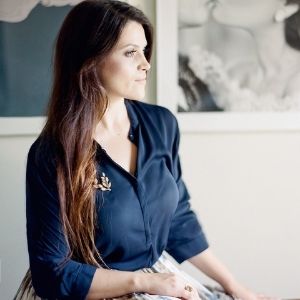
About Rensche Mari
Rensche Mari is a South African based photographer who has been a Wedding and Portrait photographer for the last 16 years with a background in visual communication. Rensche focuses on being a storyteller, so that each wedding ends up being printed and bound into a beautiful keepsake.
One of the things Rensche loves to talk about is print, I feel like so many photographers don’t understand the power of print, and how they can easily step up their game by creating something for clients to touch. Rensche has been printing albums and creating gallery walls for more than 14 years and believes it is a great way to market yourself as a photographer and to actually appreciate your own work.
